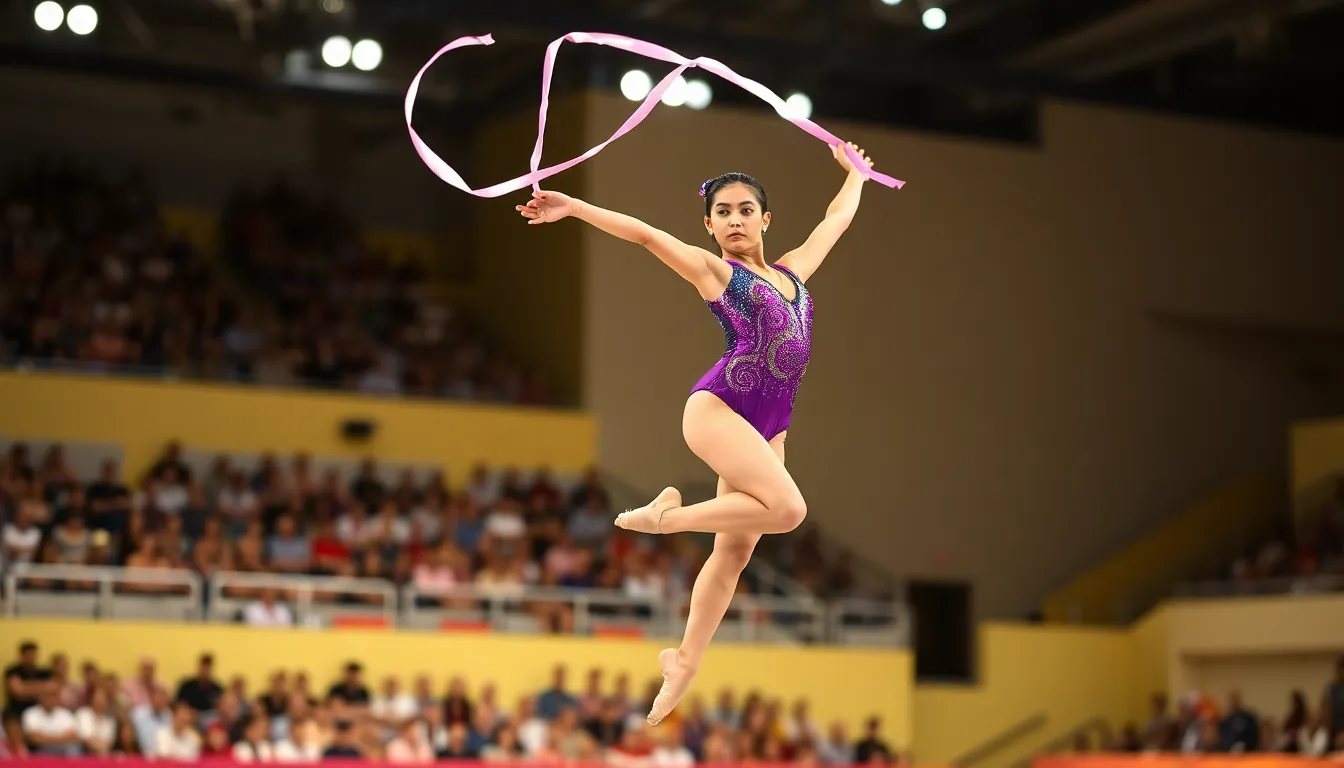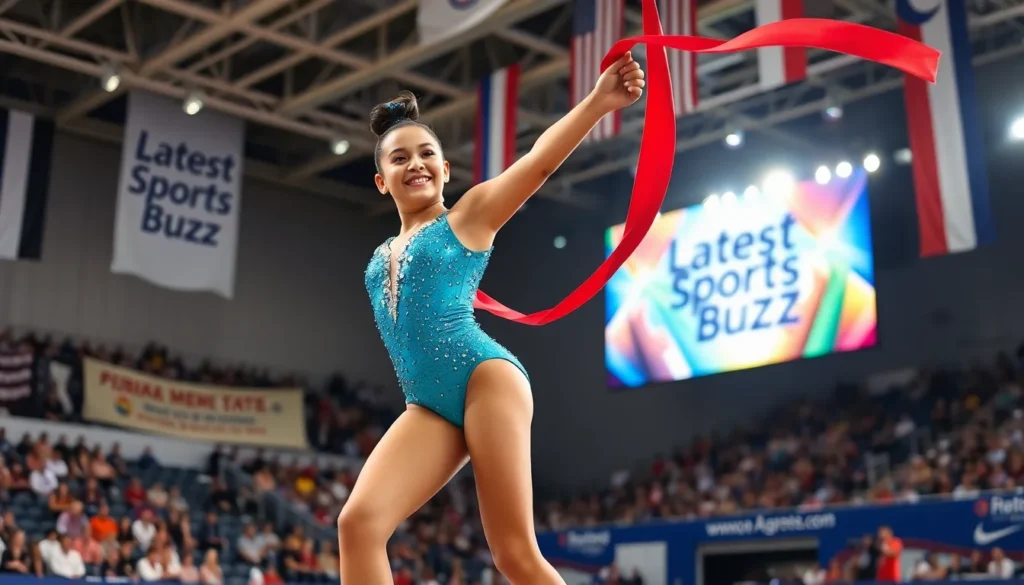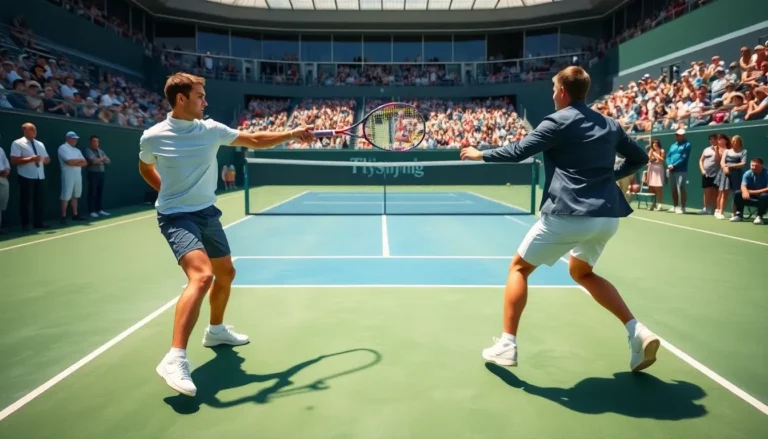Table of Contents
ToggleRhythmic gymnastics uniquely blends athleticism and artistry, captivating audiences worldwide with its combination of grace, flexibility, and skill. This sport, steeped in history, has evolved into a key component of competitive gymnastics, showcasing athletes’ talents on international stages. As rhythmic gymnastics garners increasing attention, it becomes imperative to explore its development, notable figures, recent events, and future directions. This article dives into the latest buzz surrounding rhythmic gymnastics, highlighting its important aspects and aspirations for the future.
Overview of Rhythmic Gymnastics

History and Evolution
Rhythmic gymnastics emerged in the early 20th century as a blend of dance, gymnastics, and circus arts. The sport gained traction in the 1940s and 1950s, particularly in Europe, where it was associated with physical education programs. In 1963, rhythmic gymnastics was officially recognized by the International Gymnastics Federation (FIG), paving the way for its inclusion in international competitions. The 1984 Los Angeles Olympics marked a significant milestone, as rhythmic gymnastics debuted as an Olympic sport, further propelling its popularity.
Key Characteristics of the Sport
Rhythmic gymnastics is distinguished by its use of various apparatus, including ribbons, hoop, ball, clubs, and rope. Athletes perform choreographed routines that blend gymnastics moves, dance, and artistic expression, all set to music. Precision, flexibility, and coordination are crucial in executing these intricate routines, which are judged on the execution, artistry, and overall performance. Each routine typically lasts between 1 to 2 minutes and is critically evaluated by a panel of judges during competitions.
Major Competitions and Events
Olympic Games and World Championships
The Olympic Games and World Championships are the pinnacle of rhythmic gymnastics competition, attracting top gymnasts from around the globe. The Olympic rhythmic gymnastics event features individual and group competitions, showcasing the skills of elite athletes. The next Olympic Games, hosted in Paris in 2024, are highly anticipated, with many competitors eyeing the chance to secure a medal in this demanding sport.
The World Championships, held biennially, provide a platform for gymnasts to demonstrate their talents and gain international recognition. These events often set the stage for emerging stars to make their mark and influence future trends in rhythmic gymnastics.
Notable Athletes and Their Achievements
Emerging Stars in Rhythmic Gymnastics
The rhythmic gymnastics scene is continually evolving, with new talents emerging to captivate audiences. Athletes like Lalo Diogo from Brazil, who clinched gold at the 2023 World Championships, are already making waves with their innovative routines and artistic flair. Other promising athletes include 16-year-old Olivia Wang from the USA and Sofia Petrova from Russia, who have been demonstrating exceptional skills in various cup events leading up to the Olympics.
These young stars are not only displaying impressive athletic prowess but also advancing the sport by introducing fresh choreography and engaging performances that resonate with spectators.
Impact of Training and Coaching
Trends in Training Techniques
Training in rhythmic gymnastics has evolved significantly over the decades, incorporating modern methodologies to enhance performance. Coaches are emphasizing the importance of individualized training programs that cater to the athletes’ strengths and weaknesses. Modern training often includes cross-training techniques, utilizing elements from sports like ballet and modern dance to improve flexibility, strength, and artistic expression.
Also, technology plays a pivotal role in coaching, with video analysis becoming a staple in routine evaluations. Athletes can now review their performances in detail, allowing them to refine their techniques and make informed adjustments.
The Role of Technology in Rhythmic Gymnastics
Equipment and Innovations
Technological advancements are making their way into rhythmic gymnastics, influencing both training and competition. Enhanced materials, like lightweight synthetic fabrics for leotards and improved elasticity in apparatus, are being utilized to optimize performance. Equipment such as smart balls and clubs equipped with sensors for feedback are emerging, allowing athletes to analyze their movements and grip more effectively.
Also, dance and choreography software enables coaches and choreographers to create and visualize routines, ensuring a seamless blend of movement and music. These innovations are crucial for athletes striving to stay competitive in a demanding sport.
Recent Highlights and News in Rhythmic Gymnastics
Major News Stories from 2025
As of 2025, rhythmic gymnastics continues to capture headlines with thrilling performances and notable competitions. The European Championships held in Germany showcased astonishing talent, with several rising stars earning recognition. Also, the US National Team, under the guidance of new head coach Mia Thompson, is implementing fresh training approaches, which have begun to yield impressive results in recent international competitions.
The sport is also receiving increased media coverage, leading to more awareness and interest among younger athletes. Upcoming events, such as the Grand Prix series, promise excitement and are likely to further shine a spotlight on rhythmic gymnastics.
Future of Rhythmic Gymnastics
Challenges and Opportunities Ahead
Looking towards the future, rhythmic gymnastics faces both challenges and opportunities. One significant challenge is maintaining its relevance in a sports landscape increasingly dominated by high-energy, fast-paced athletic disciplines. To ensure growth, the sport must adapt, incorporating elements that attract younger audiences while retaining its artistic essence.
Opportunities abound through initiatives aimed at increasing accessibility and participation. Grassroots programs and community initiatives are emerging, encouraging interest in rhythmic gymnastics at an early age. By fostering talent in diverse settings, the sport can expect a new generation of athletes committed to excellence and innovation.
Conclusion
Rhythmic gymnastics is not merely a sport: it is a profound expression of art and athletic ability that continues to inspire. With its rich history, evolving training methods, and the passion of athletes, rhythmic gymnastics is poised for a dynamic future. As athletes prepare for upcoming competitions and the next generation steps into the spotlight, the buzz surrounding this enchanting sport will undoubtedly continue to grow.







